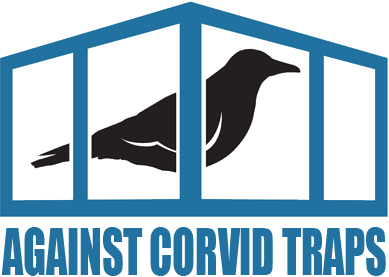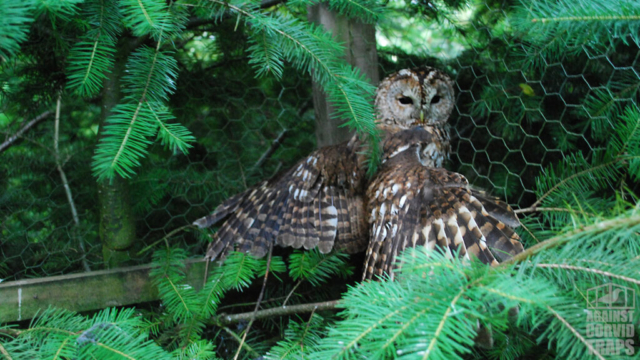Raptor Traps
Birds of prey such as buzzards, goshawks, sparrowhawks, peregrines and owls, play a vital role in maintaining ecological balance and biodiversity are protected by law in the UK. However, some gamekeepers intentionally trap birds of prey in crow traps as they perceive these magnificent creatures as a threat to game bird populations.
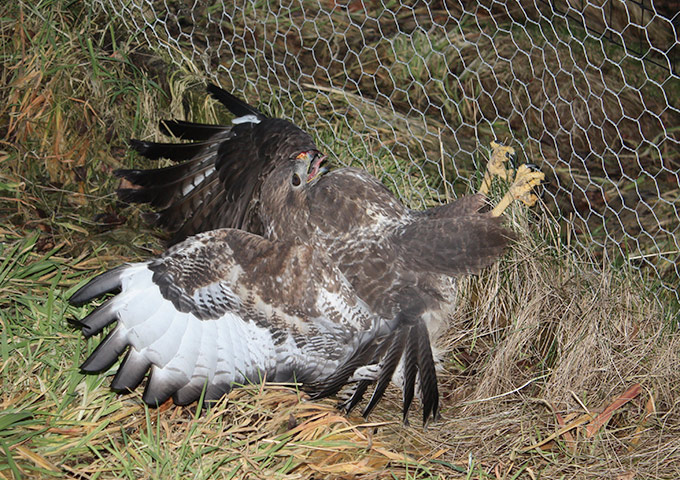
Raptor Traps in the UK
Ladder traps and Larsen traps are often referred to as ‘crow traps’, however their non-selective nature makes them equally as effective as Raptor traps. Defra know this, Natural England know this, yet both are happy to permit their use in the full knowledge that birds of prey will be trapped.
Larsen Trap
As with Ladder traps, Larsen traps are notoriously indescriminate, as a result protected birds such as birds of prey fall victim to these traps.
Clam Trap
Similar to the Larsen mate trap but much bigger in order to trap birds of prey. Typically the trap uses bait to lure the bird to land on the trigger perch. They will be set well away from public view but close to where birds of prey are sighted.
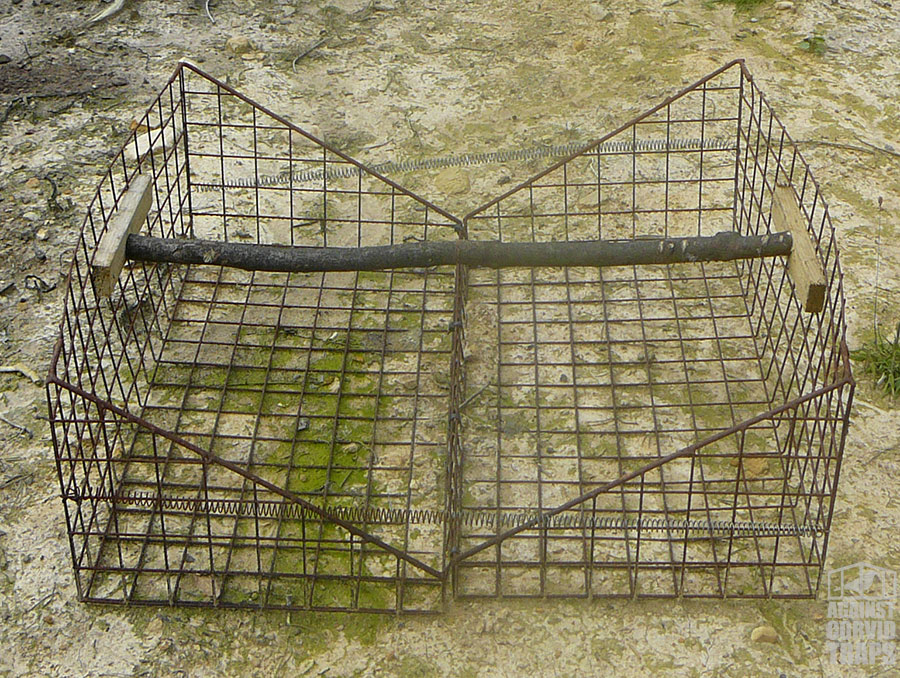
Hawk Trap
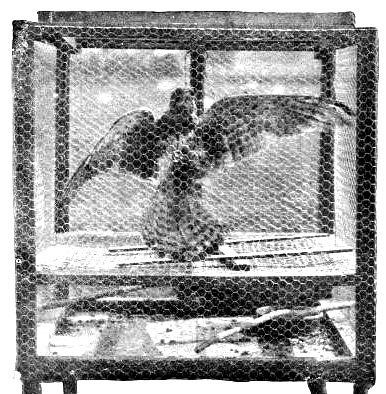
It’s rare to find one of these, but like gin traps they are still deployed by some gamekeepers. The trap consists of two compartments. The bottom one is for the decoy bird(s) or bait and the top compartment is for the target bird. It uses a trap door, not too dissimilar to a Larsen trap.
An advertisement for the Hawk Trap in 1909 stated, “An efficient and humane method of catching hawks, the birds being taken uninjured. Kestrels can, therefore, he liberated if desired.
“Used on many large estates with great success… no keeper in charge of young pheasants should be without one.”
Cage Traps
Larger cage traps, typically used for ‘humane’ trapping of foxes, also pose a risk to birds of prey. The bait will attract the bird into the trap.
Pigeon Decoy Birds
Pigeon holding pens or pigeon coups on a shooting estate, typically on grouse moors, should be reported to the RSPB. Pigeons are used as a decoy bird (call bird) in Ladder traps and Larsen traps to attract and trap birds of prey.
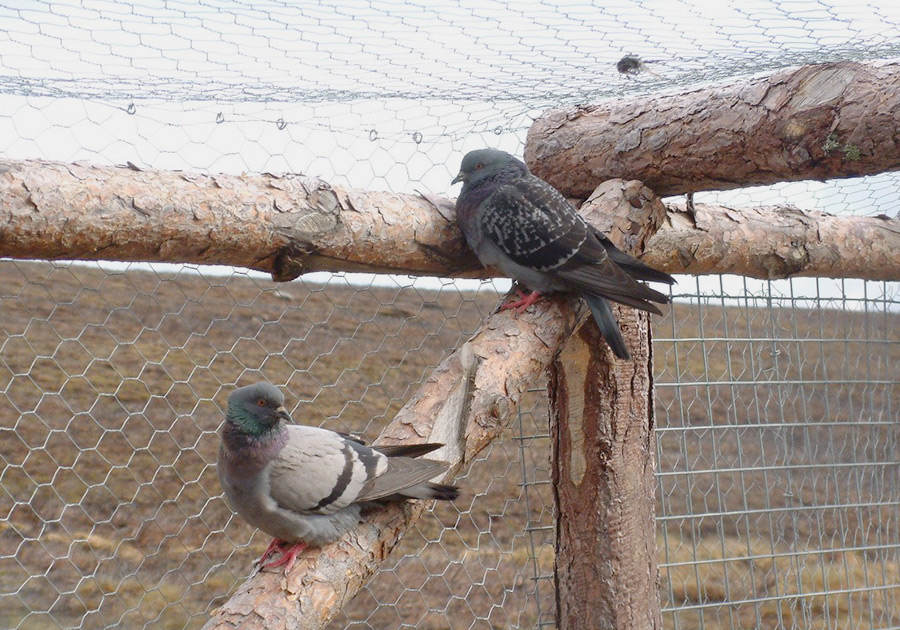
Misuse of Crow Traps
The use of Multi-traps to catch crows poses a real threat to birds of prey. The RSPB has recorded many incidents of crow traps being misused by gamekeepers to trap and kill birds of prey.
An example being this case in April 2005 when two gamekeepers, Leslie Morris and Michael Clare, from the Bradenham Hill Pheasant Shoot, West Wycombe, Berkshire were convicted of killing a buzzard they found in their crow multi-trap.
In 2006 gamekeeper David Scott was filmed shooting two buzzards which had become caught in a trap designed to control crow numbers. An additional eleven Buzzards were found buried in rabbit holes near the Crow Trap on the Cabrach estate.
Selected incidents of protected species found dead in crow cage traps
From Appendix 2 of ‘A review of crow cage trap use and misuse in Scotland 1998-2004‘ by Jessica Abbott, Dave Dick and Andrew Stronach – RSPB
1. Skeletal remains of two Short-Eared Owls and a Long-Eared Owl
On 26th May 2004, the skeletal remains of two Short-Eared Owls and one Long-Eared Owl were found in a crow cage on heather moor at an area known as the Caterthuns near Edzell in Angus. The trap had a padlock and chain at the door, which was not in use. The door appeared to have been closed by the growth of vegetation across it. On being interviewed by police, the “new” local gamekeeper said he had never used the trap and assumed it was not set. The photograph shows an owl skull from the trap (left) next to a museum specimen used in identification.
2. A Tawny Owl was found dead in a set and padlocked crow cage trap
On December 3rd 2003, a tawny owl was found dead by a walker at Novar in Easter Ross in a set and padlocked crow cage trap. The gamekeeper interviewed by police said that a hole at the top of the door was sufficient for birds to get out. No proceedings were taken.
3. A Sparrowhawk skeleton in ladder crow cage trap on a grouse moor
On December 22nd 2001 a Sparrowhawk skeleton was found inside a ladder crow cage trap on a grouse moor at Glen Tarken, Perthshire. The cage had an SGA/Tayside police sign attached detailing the licence requirements including the need for the operator to remove all caught birds. The gamekeeper in charge of the trap claimed that he had left the trap open some months before. A court case failed due to lack of corroborated evidence.
